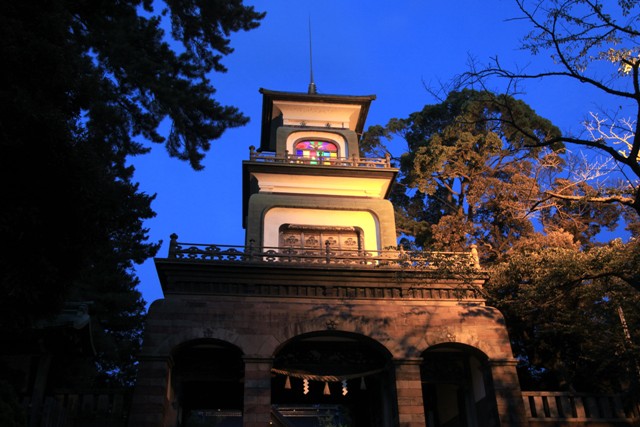EMU JR West 413 series stands at Hakui station on the Nanao line
After visiting Hakui City, we went back to Kanazawa City by train. Our vehicle was the red colored EMU JR West 413 series, an AC-DC dual mode train. It was launched in 1986 by the Japanese National Railways. The 413 series is similar with that of the 415 series, but the numbers of passenger doors are different from each other. The 413 series has 4 doors per unit; meanwhile, the 415 series has 6 doors per unit. The 413 series is the old and historical train in the Hokuriku area; however, a total of 11 sets are still operated. 6 sets belong to JR West; meanwhile, 5 sets belong to Ainokaze-Toyama Railway. The JR West trains are red colored; meanwhile the Ainokaza-Toyama trains are blue colored.
After coming back to Kanazawa, we then visited Kenrokuen Garden. Along with Kairakuen in Mito City and Korakuen in Okayama City, Kenrokuen is counted as one of the three most famous gardens in Japan. It was originally built as the outer garden of Kanazawa Castle in 1676. The garden was then developed to perfection over generations by the lords of the Kaga Domain. There are ponds, streams, hills, groves, flower gardens, several pavilions and tea houses. Among the various highlights in the park, I like "Karasakimatsu (Karasaki Pinetree" best. It was planted by Maeda Nariyasu, the 12th lord of the Kaga Domain, in 1830s. We can see the well-formed pine tree, which has long branches extending over the water surface of a pond.
After coming back to Kanazawa, we then visited Kenrokuen Garden. Along with Kairakuen in Mito City and Korakuen in Okayama City, Kenrokuen is counted as one of the three most famous gardens in Japan. It was originally built as the outer garden of Kanazawa Castle in 1676. The garden was then developed to perfection over generations by the lords of the Kaga Domain. There are ponds, streams, hills, groves, flower gardens, several pavilions and tea houses. Among the various highlights in the park, I like "Karasakimatsu (Karasaki Pinetree" best. It was planted by Maeda Nariyasu, the 12th lord of the Kaga Domain, in 1830s. We can see the well-formed pine tree, which has long branches extending over the water surface of a pond.
Karasakimatsu (Karasaki Pinetree) in Kenrokuen Garden near Kanazawa station













